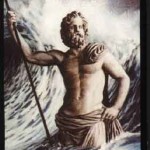I have mentioned before daughter Eleni’s blog, which she began this year, called “The Liminal Stage.” Having studied Folklore and Mythology in college, Eleni writes about traditions, rituals, and liminal stages—the “psychological thresholds, times of transition when we stand ‘betwixt and between’ one state and another. The biggies are birth, marriage, death”.
The blog post she wrote yesterday, inspired by the fact that it was St. Anna’s day, just blew me away. She makes it look so easy. Her writing is always funny, conversational, yet full of wisdom. (A proud mother’s plug: her second book, first novel “Other Waters” is being published in February by St. Martin’s Press). By the end of yesterday’s essay, I had a lump in my throat. So I asked Eleni’s permission to reprint the post here, because I think it deserves the widest possible audience.
My emotional reaction to this blog post was not unique. A dear friend who lives in Israel wrote her yesterday: “Each blog post is more – better – awesome – terrific….My grandmother (who died in Auschwitz) was named Anna. One of the few photos I have of her is sitting outside on a stone or something very low and reading. And here we have Anna teaching Mary how to read. My mother’s name had a bit of Mary in it, as did many females in Hungary at the time. See—your blog make my memory electrons move rapidly.
You touch my heart.”
My Lost Saints














No comments:
Post a Comment